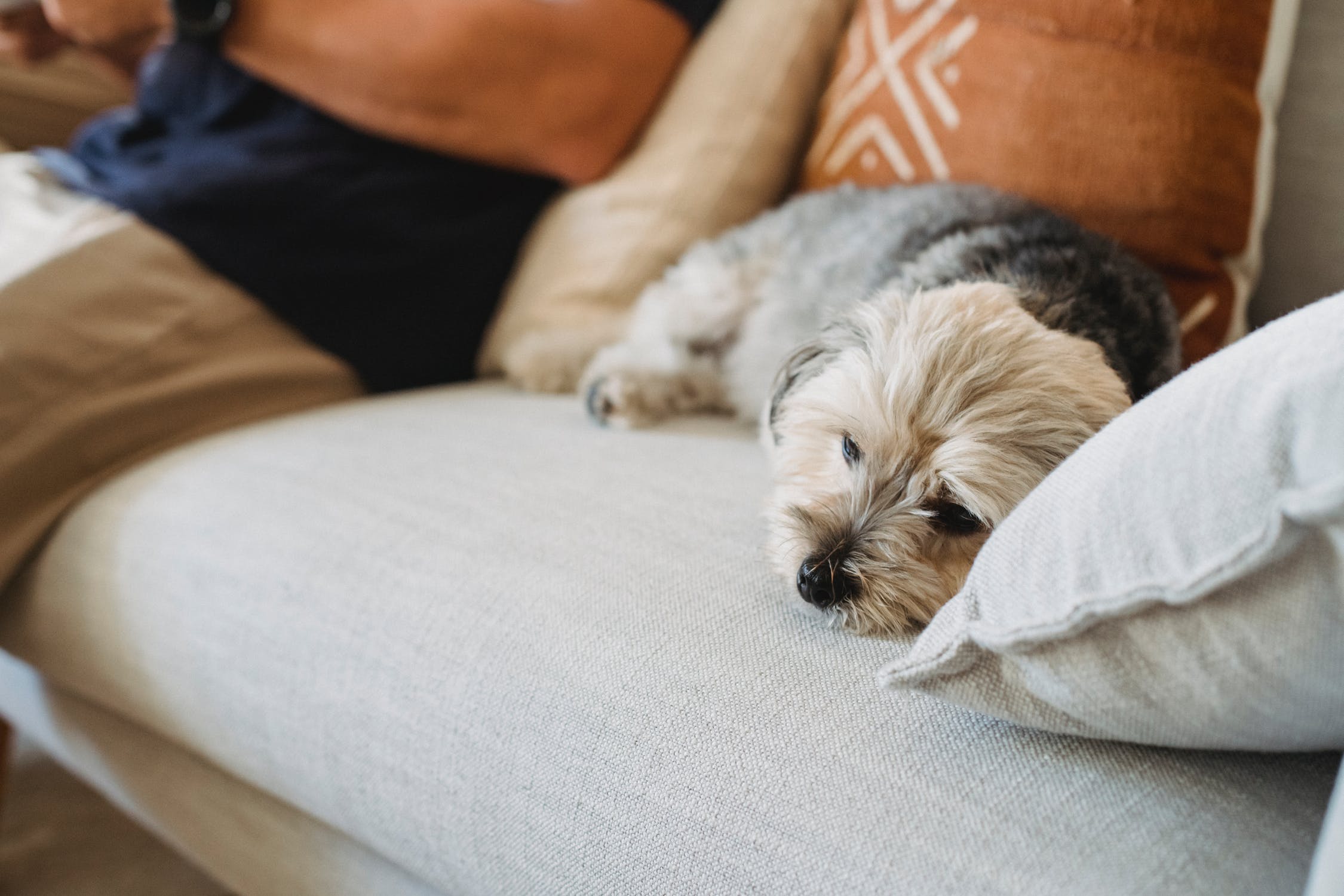Post-COVID separation anxiety and your pets
by Ontario SPCA and Humane Society | Dog Care | August 19, 2021

During lockdowns in Ontario, we have spent much more time at home with our animal companions. Our fur babies offered emotional support during times of isolation and uncertainty. And with more time at home, there were extra walks, snuggles and a new routine for both us, and our furry friends. So is post-COVID separation anxiety something your animal may experience?
Routines are changing
As more and more people go back to the office, routines are beginning to change once again. The shift in routine and spending less time with them could cause your furry friend stress and anxiety. By preparing them in advance for the transition, you may avoid the stress developing into separation anxiety.
Here are our tips for handling post-COVID separation anxiety and your companion animals.
What to look for
The following behaviours could indicate your animal is feeling anxious or stressed:
- Barking, whining, howling or other vocalization
- Inappropriate defecation or urination
- Destructive behaviour (chewing furniture, digging or destroying household items)
- Excessive drooling or panting
- Pacing
- Trying to escape from their crate
Fear Free Happy Homes has some helpful steps to prevent separation anxiety from Kenneth Martin DVM, DACVB and Debbie Martin LVT and VTS (Behaviour).
Meet your animal’s needs
At the top of the list from Fear Free Happy Homes is making sure that you are meeting your animal’s needs every day. That includes regular activities such as leashed walks, play time, positive reinforcement and environment enrichment. Consistent meal time is also very important for your animal companions to maintain some part of their normal routine.
Keep calm
The article also suggests fostering a calm environment for your furry friend will help alleviate stress and anxiety. You may have to change your own behaviour to help your animal companion in this area. When you leave the house or return home, keep your energy low-key and calm.
Some other tips for helping your animal stay calm includes leaving a food puzzle, chew toys or other stimulation for your pet while you are away. Preventing boredom and providing alternative entertainment could relieve the stress of your absence.
Spend time apart
When you and your animal companion are home, allow them “quiet time” or nap time when you are not focusing attention on them. Having time away from each other by going for a walk or running errands on your own is another way suggested by the Fear Free blog to ease your animal companion into spending more time alone.
In case of separation anxiety
In some cases, an animal will develop separation anxiety despite your best efforts.
Your veterinarian or a behaviour therapist can work with you and your animal companion to suggest anxiety management tools most suited to your situation. These may include medications and supplements to ease fear and stress, in addition to behaviour modification and controlling your environment.
Whether you’re leaving home more to return to a work space or just getting out to enjoy the summer, remember that your four-legged friend won’t necessarily understand a sudden change in routine. A stress-free pooch or kitty makes for a happier home for everyone. We hope you found our tips for post-covid separation anxiety helpful!
Learn more about separation anxiety and your companion animal:
https://ontariospca.ca/blog/covid-19-and-separation-anxiety-in-pets/
https://ontariospca.ca/blog/separation-anxiety-and-companion-animals/
https://www.fearfreehappyhomes.com/kit/separation-anxiety/#blog_link1
file://ospca-th-fs01/Users$/ecook/Downloads/Preventing-Separation-Anxiety-after-Covid-19.pdf
Categories
Testimonial
As an animal lover all the work you do
As an animal lover all the work you do to help ensure that every dog and cat can find their forever home that is filled with love is greatly appreciated.